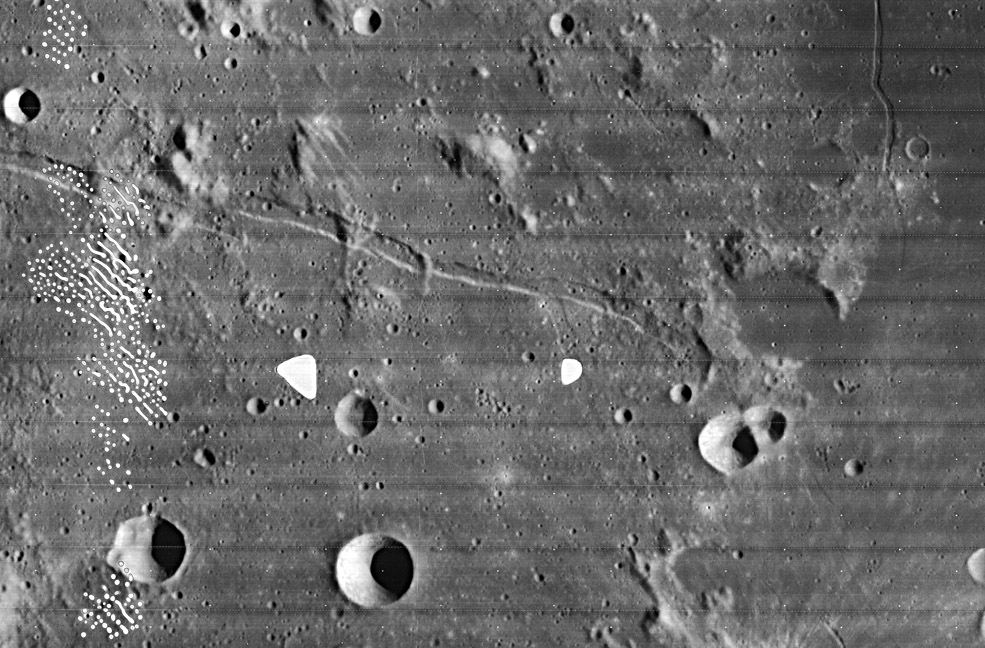
Lunar Orbiter image by Lunar Orbiter Digitization Project; Cayley is the large crater near bottom center
Geologic mapping of the Moon in the 1960s required every single piece of its surface to be interpreted as having a specific origin and at least a general age. The US Geologic Survey mappers recognized, apparently for the first time, that there were many relatively smooth plains on the Moon. The best known are the dark maria, but the new ones discovered by Survey mappers were light-hued. Such plains were named the Cayley Formation, after the type area surrounding the Cayley impact crater. The plains have nothing to do with the crater, it is simply the landmark they were named after. Careful observations showed that the Cayley Formation seemed to mantle earlier terrain and perhaps is on top of the hilly material that is ejecta from the Imbrium Basin. The knobby ejecta is called the Fra Mauro Formation after its type area near the crater of the same name. In the area of the crater Cayley the smooth plains are not cut by Imbrium sculpture, but the nearby Mare Tranquilitatis lavas embay (and thus are younger than) the Cayley plains. The Cayley also has a higher concentration of impact craters than the mare. These observations establish a stratigraphic position for the Cayley Formation - it is younger than the Fra Mauro Formation (i.e. younger than the formation of the Imbrium Basin), but older than the emplacement of the Tranquillitais lavas. Survey scientists interpreted the origin as being some combination of ash flows and ashfall from an eruption cloud. This was a very reasonable view in 1965. But then we went to the Moon, and specifically to Apollo 16, which landed on an area mapped as Cayley Formation. The volcanic interpretation lasted only until astronaut John Young looked out the window of his lunar lander and noticed that the rocks were bright. Laboratory analysis of samples showed that the Apollo 16 Cayley was all brecciated (highly fractured) impact material. Overnight the interpretation became that the Cayley all over the Moon was fluidized ejecta from Imbrium and local rocks churned up by basin secondaries. This is certainly true for the Apollo 16 area, but the German scientist Gerhard Neukum determined crater count ages of different units mapped as Cayley Formation and found they had a number of different ages, including younger than the time of formation of the Imbrium and Orientale basins. Gerhard’s results don’t fit our general understanding and thus they tend to be neglected. We still don’t know fully know what the origin or origins are for the Cayley Formation.
Technical Details:
Lunar Orbiter IV-90h1
Related Links:
Rükl plate 34
Yesterday's LPOD: A Classic View
Tomorrow's LPOD: Riddlesome Rilles
COMMENTS?
Register, Log in, and join in the comments.



